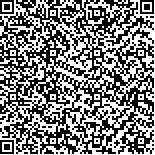下载中心
优秀审稿专家
优秀论文
相关链接
摘要

| 作者 | 单位 |
本研究依据土壤水量平衡及能量平衡的原理,提出了一套利用遥感方法监测冬小麦干旱及建模的方法。首先,用热惯性方法建立试区土壤表观热惯量与土壤水分的关系,用其估算初始土壤含水量(W_0);再用NOAA-AVHRR数字图像和气象数据相结合的方法估算冬小麦地的蒸散(E_t);从而根据水量平衡方程获得某一时段(旬)的土壤含水量(W_t);最后,根据冬小麦的需水规律和土壤有效水含量构造干旱指数模型。试验表明,此模型反映了作物干旱的本质,能大范围有效地监测作物旱情。
关键词:
干旱,监测,遥感,模型This paper presents a remote sensing approach for wheat drought monitoring and modeling, which based on the principles of soil water balance and energy balance. At first, the original soil water content (Wc) was obtained from the relationship of the soil moisture and in apparent thermal inertia which was established through the experiments conducted over nearly bare fields in the North China Plain. Secondly, the evapotranspiration (Et) of the wheat fields was estimated using the remotely sensed reflected solar radiation and surface temperatures extracted from the NOAA-AVHRR digital image as well as the meteorological data such as incoming solar radiation, air temperature, windspeed and vapor pressure from ground meteorological station. Then, the soil water content (Wt) in a particular period of time (say 10 day period) can be calculated using the equation of soil water balance. At last, A drought index model was developed by considering the water requirement of winter wheat and the available soil water content. This model has been proved to be effective in monitoring the wheat drought in a large area.

